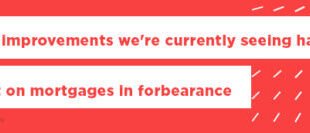
The term ‘home equity’ is one that you probably will hear a lot about as you venture into homeownership, apply for a second mortgage, or refinance your current mortgage. Because many lenders and real estate agents are so close to the subject, they may assume that you are as well versed in it as they are. So let’s take a moment to understand precisely what home equity is.
By definition, home equity is the invested value you have, as a homeowner, in your home. In short, it’s the property’s current market value after you subtract any liens on the property. That market value — and the equity a homeowner has in the home — can change over time as the borrower makes monthly mortgage payments or as lump-sum payments bring the principal down. Home equity can also change as the property’s value rises or falls along with neighboring properties and market conditions.
Another way to put it is that home equity is the value of the financial stake you have in owning your home. It’s calculated by subtracting the outstanding amount owed on the mortgage from the property’s current market value.
How home equity works
When you buy a home, it’s yours…but not entirely. When you take out a mortgage on a home, the lender — the financial institution funding that mortgage — also has a financial interest in the home until the loan has been completely paid off.
If the buyer purchased the house with a down payment applied, they immediately have some equity — the portion of the home’s value that the owner actually holds. Then, with each subsequent mortgage payment, the owner has a little more skin in the game, since a portion of each payment goes towards bringing down the outstanding principal owed.
But it’s not just the payments you put towards your home loan that help you gain equity. You’ll also see equity in your home increase, on paper at least, when its value appreciates over time. This can happen for any number of reasons, including the increased popularity of your neighborhood, increased demand for homes in your area, or a short supply of sellable properties.
Home equity by the numbers
Let’s say you’re a homeowner who has just bought a new home for $ 300,000. You made a 10% down payment of $ 30,000 and took out a home loan for the remaining $ 270,000. You, the owner, have 10% equity in the house. Your lender, on the other hand, has 90% equity.
You make your monthly mortgage payments on time, knowing that much of those early payments are going to pay off the interest. But some portion of those payments is applied to the principal. Five years go by. Let’s imagine that roughly $ 15,000 of the principal is paid back to the lender in that time. You now have invested a total of $ 45,000 against the $ 300,000 purchase. Your home equity has climbed to 15% while the lender’s share has dropped to 85%.
Let’s take it a step further with the above scenario in mind: a $ 300,000 home with a $ 30,000 down payment and $ 15,000 applied to the principal. Now imagine your home’s market value increasing by $ 50,000 over those five years. As the owner, you would have a total of $ 95,000 of equity in a home valued at $ 350,000. That’s just over 27% in home equity.
How to tap into home equity
Homeowners can leverage the equity in their home in several ways, each based on the borrower’s credit score, repayment history, and the total amount of equity built up so far. The most popular ways to do that include:
- HOME EQUITY LOAN: With a home equity loan (HEL), borrowers can get a lump sum of cash that they’ll pay back within a specific time. This allows the homeowner to have fixed, predictable interest payments over the length of the loan.
- HELOC: Officially called a home equity line of credit, the HELOC is a revolving credit line with a variable interest rate. Like a credit card, it allows a borrower to repeatedly withdraw and repay funds (and the associated interest payments) as often as is needed.
- CASH-OUT REFI: A cash-out refinance allows the homeowner to borrow a portion of the home equity they built up and refinance their mortgage at the same time.
Rather than ask “how” to tap into home equity, the more important question might be “why” tap into your home equity? And the answers are varied. Maybe you’re looking to renovate your kitchen, add a she-shed or in-law apartment, or purchase a weekend home. Or perhaps you need extra cash to cover college tuition or buy extra tech to accommodate kids taking online classes while the parents are still working from home.
Emergency expenses, investment properties, retirement income, debt consolidation, home improvement — they’re all good reasons to tap into what might be your most significant accumulation of wealth — the equity you’ve already invested in your home. By doing so, you increase your purchasing power without dipping into emergency savings.
Note that most lenders won’t let you borrow against the full amount of your home equity. Before the coronavirus pandemic, borrowers with good credit scores and perfect payment histories could borrow up as much as 80% to 90% of the available equity. Under current economic circumstances, a borrower’s risk will be considered even more carefully, so the percentage allowed today may vary from lender to lender.
One last thing about home equity
Remember, just because you can borrow against your home equity doesn’t mean you should. Sometimes, it’s just nice to see how much of your home you actually own, and how much it’s grown since you first bought your house.
Home equity can get confusing, but hopefully this article has made things a bit clearer. If you’re looking for more information and would like to speak with an experienced mortgage professional, we’re standing by and ready to help. Otherwise, if you know what you’re looking for and are ready to get started, we’ve made the application process simple for you, too. Click here to apply online.



